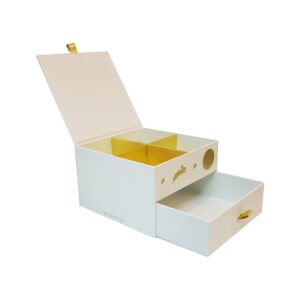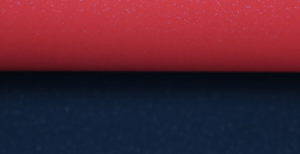Cold foil printing is an advanced printing technique that allows for the application of metallic foil to a substrate without the use of heat. This method is known for its ability to produce high-quality, reflective finishes quickly and efficiently. Below is a detailed overview of cold foil printing:
Benefits of Cold Foil Printing
- High-Quality Finish:
- Metallic Shine: Provides a brilliant, reflective metallic finish similar to hot foil stamping, but with a different application process.
- Color Variety: Foils are available in various colors and finishes, including holographic effects, allowing for creative and eye-catching designs.
- Speed and Efficiency:
- Inline Process: Cold foil printing can be done inline with the printing press, reducing production time and increasing efficiency.
- Quick Setup: Faster setup compared to hot foil stamping since it doesn’t require heating dies or long cooling times.
- Cost-Effective:
- Reduced Costs: Lower setup and production costs for short to medium runs compared to hot foil stamping.
- No Heat Required: Saves energy and reduces potential substrate damage associated with heat.
- Design Flexibility:
- Complex Designs: Capable of producing intricate and detailed designs with fine lines and patterns.
- Registration Accuracy: High precision in foil application allows for accurate registration with printed elements.
Applications of Cold Foil Printing
- Packaging: Used in consumer product packaging to add a premium look and enhance shelf appeal.
- Labels and Tags: Commonly used for product labels, particularly in the beverage, cosmetics, and pharmaceutical industries.
- Business Cards: Provides a luxurious and professional finish that stands out.
- Brochures and Flyers: Enhances marketing materials with striking metallic effects.
- Book Covers: Adds a touch of elegance and sophistication to book covers, especially for limited editions or high-end publications.
- Promotional Materials: Used in various promotional items to attract attention and convey a high-quality image.
Process of Cold Foil Printing
- Design Preparation: The design is created, and the areas to be foiled are specified in the artwork.
- Printing Adhesive: A UV-curable adhesive is applied to the substrate in the areas where the foil is desired.
- Foil Application: The metallic foil is then pressed onto the adhesive while still tacky.
- Curing: The adhesive is cured using UV light, which bonds the foil to the substrate.
- Foil Removal: The excess foil is removed, leaving the metallic foil adhered only to the printed adhesive areas.
- Final Printing: Additional printing can be done over the foiled areas to add colors or other design elements.
Considerations for Cold Foil Printing
- Substrate Compatibility: Cold foil printing works well on a variety of substrates, including paper, cardboard, and some plastics. However, it’s important to test compatibility with specific materials.
- Adhesive Quality: The quality and type of adhesive used can significantly impact the final result. It must be carefully selected to ensure strong adhesion and sharp detail.
- Design Restrictions: While capable of detailed designs, cold foil printing may have limitations with extremely fine lines or very small text.
- Environmental Impact: Consider using eco-friendly foils and adhesives to reduce environmental impact.
Cold foil printing is an excellent choice for adding a metallic finish to printed materials in a cost-effective and efficient manner. It is particularly suitable for packaging, labels, business cards, and promotional materials, providing a high-quality, reflective finish that enhances the visual appeal and perceived value of the product.



